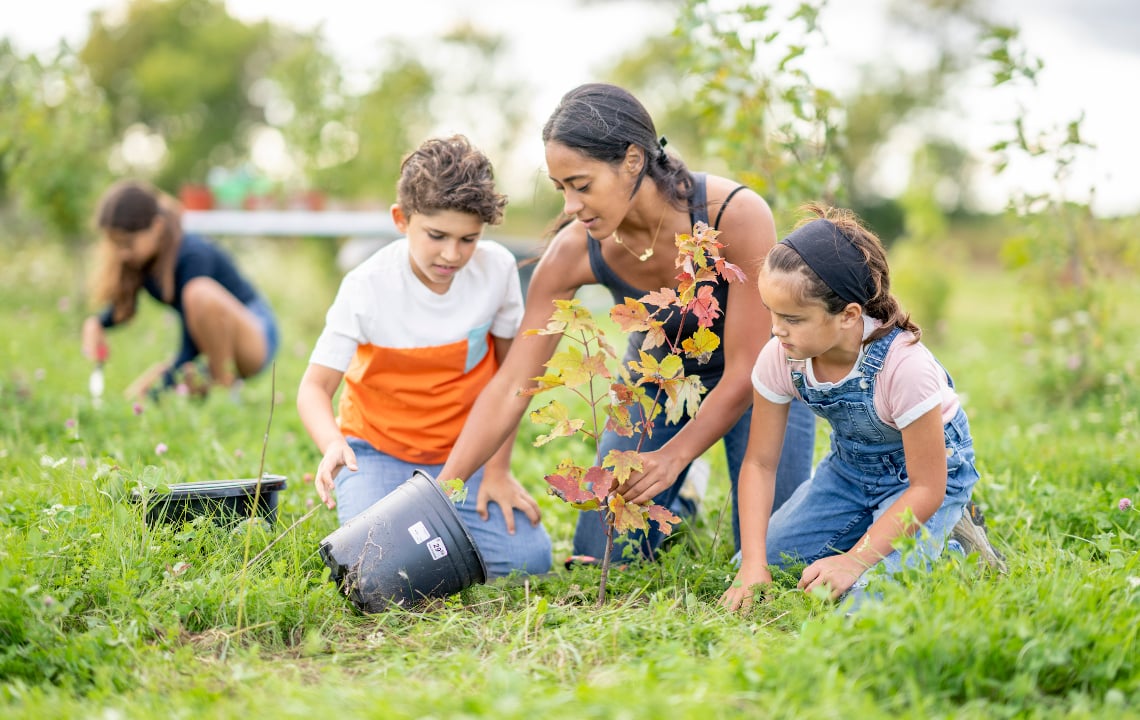Happy Earth Day 2024! This year, we’re celebrating Earth Day’s theme, Planet vs. Plastics, with a few tips for reducing plastic waste on the homestead.
Crop fields and livestock management — whether large or small — produce 14 million tons of plastics each year.
This staggering statistic might make you holler, “Holy Cow!” Luckily, EarthDay.org is taking a stand — and you can, too.
EarthDay.org is calling for a 60% reduction in plastic production by 2040.
To achieve this ambitious goal, EarthDay.org has created an “Action Toolkit” filled with educational resources, tips for organizing a Global Cleanup event and a challenge and quiz you can take to help reduce your plastic consumption.
As it applies to agriculture, including homesteading, plastic use has become so widespread that the word “plasticulture” was introduced.
Simply put, plasticulture is the overuse of plastic in agriculture, and it’s time we kick the addiction.
When used on the ground, plastics can disturb soil health and leach into local waterways. Over time, these petroleum-based products break down into tiny toxic particles that later enter the food you grow.
Although we can’t fully escape plastic, we can become conscious stewards of the earth and farmland by reducing plastic use whenever possible.
It doesn't matter what political or social ideas you ascribe to; we all will benefit from using less plastic, especially for future generations.
Yes, there is good news!
Plastic alternatives exist and are available to farmers and homesteaders alike. So if you’re looking to reduce your carbon footprint and limit plastic use, we have some alternatives and tips to try.
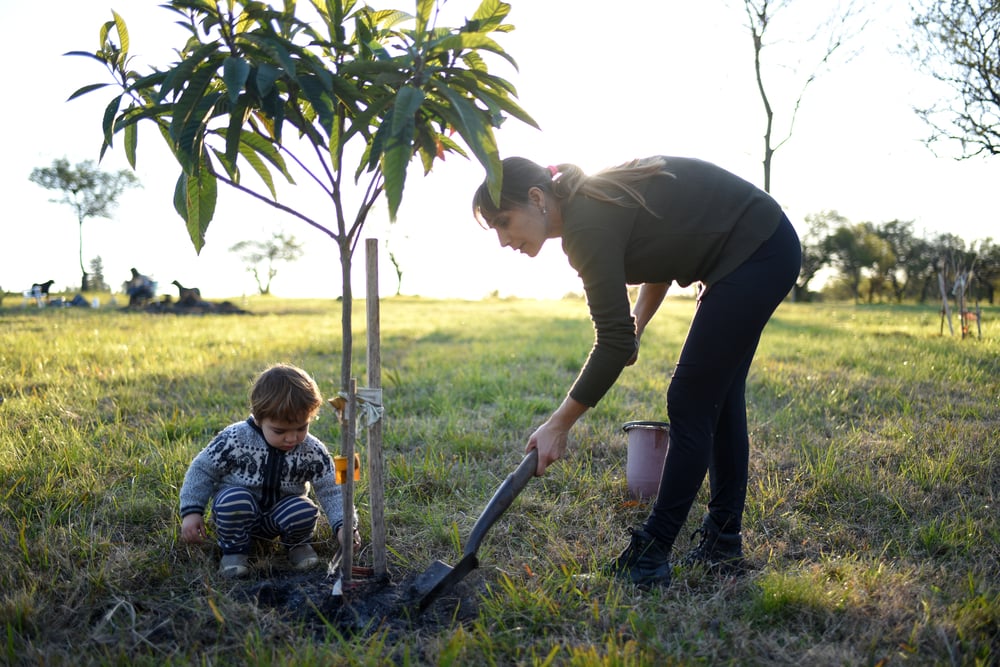
#1: The Obvious — Plant a Tree (or two)!
Earth Day is known for the global participation of planting trees. This annual celebration is designed to give back to our planet and provide us with the health benefits of trees.
Trees also provide value to those living a self-sufficient lifestyle. From nutritious fruits to natural medicinal benefits to practical uses such as firewood and shade, trees are undeniably useful on the farm. This Earth Day, we encourage you to plant a tree (or two) on the homestead.
What to consider when choosing a tree for the homestead:
- Where you live. First and foremost, note your hardiness zone. This will help narrow down your choices to trees that thrive in your area.
- What is the purpose of the tree? Will you be using the tree’s fruit for food or medicinal purposes? Or are you thinking more practical — firewood, shade for the garden or livestock? This will help guide your decision.
- Consider the tree’s growing needs. How much sunlight will it need? What type of soil is required? Will it survive your area’s winters and typical rainfall amounts?
- Plan to plant at least two. Most fruit trees need to be pollinated with at least one other similar variety. If possible, plant a couple of the same trees to encourage pollination. Plant them about 30 to 50 feet apart for best results.
Consider planting trees that offer your homestead a variety of benefits, including:
Apple Trees
You’ve heard the age-old saying, “An apple a day keeps the doctor away.” This ancient proverb teaches the importance of maintaining healthy habits. Taken literally, you’ll find that, in fact, apples are incredibly beneficial to your health and homestead.
A common household fruit, apples are great for snacking, baked pies and pastries and juicing.
Additionally, some varieties host valuable medicinal properties when used to make apple cider vinegar. A natural antiseptic, apple cider vinegar can be used for skin issues, inflammation and other health ailments.
Another perk: Many homestead livestock, including pigs, horses, chickens, and goats, love to nibble on apples.
A few apple tree varieties for the homestead include:
- Golden Delicious - great for juicing and baking.
- Mcintosh - good for making ciders, including apple cider vinegar. Also great for baking.
- Red Delicious - used for juicing and baking.
Related read: 10 Clever (and easy) Ways To Use Up Apples.
Cherry Trees
Sipping on a glass of freshly juiced cherries can significantly improve your health. Studies have shown that consumption of cherries can decrease stress, inflammation, and blood pressure.
Cherry trees come in two variety choices: sour and sweet cherries.
Sour cherries are commonly used in tart juices and for baking, while sweet cherries are great for picking and eating right off the tree. But because the two varieties will not cross-pollinate, plant at least two of the same type.
And yes, you can plant fruiting cherry trees in the South, such as the Royal Cherry variety. Check with your local nursery for recommendations based on your location and growing zone.
Planting Tip: A full-sun lover, cherry trees thrive best in hardiness zones 4 to 8 and require well-drained, fertile soil.
Bur Oak Trees
The bur oak tree can grow for hundreds of years and is considered one of the toughest trees around due to its strong branches, drought tolerance and winter hardiness.
Known for their fuzzy exterior coating, bur oak acorns can be eaten straight off the tree, unlike other acorns. These acorns have the fewest tannins, making them the least bitter. Eat them roasted or grind them up into a light flour for baking.
Planting Tip: These trees reach up to 80 feet at maturity and are best grown in hardiness zones 3 to 8.
For more, check out Incorporating Fruiting Perennials into Rural Landscapes.
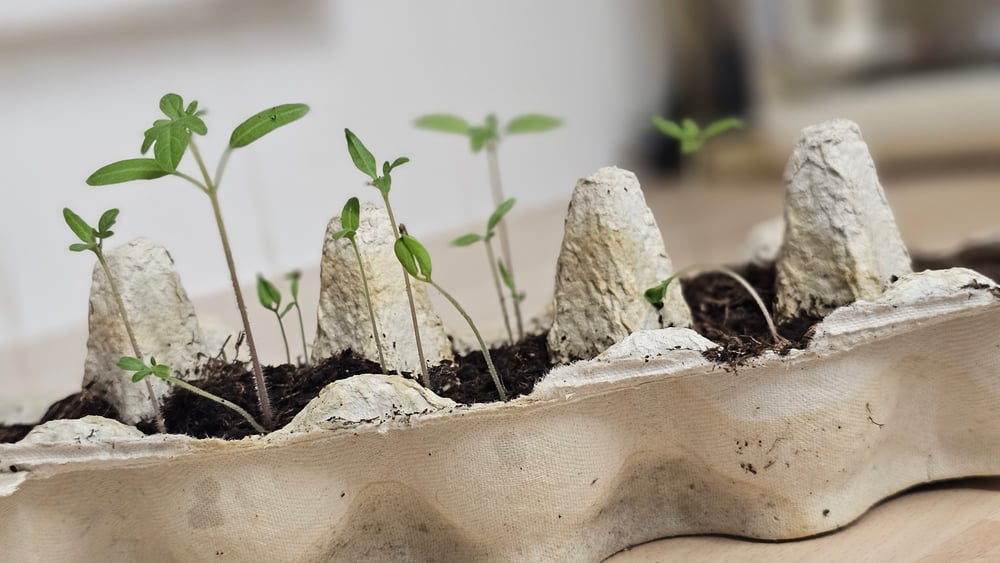
#2: Opt for Biodegradable Seed Starting Options
Choose biodegradable seed starting options over plastic seedling trays and pots. This waste-free approach is advantageous, as soil and paper-based seed starters can be planted directly into the garden.
Soil blocks and paper egg cartons are two options we recommend trying this spring.
Soil Blocks
Soil blocks are as plastic-free and environmentally friendly as you can get with seed starting. These small blocks of lightly compressed potting soil eliminate the use of plastic pots while providing a safe growing medium for tiny seedlings.
Plant soil blocks directly into the garden when seedlings are ready.
Learn how in: How To Make Soil Blocks For Waste-free Seed Starting.
Paper Egg Cartons
If you’re a typical homesteader, you have paper egg cartons aplenty. Put these biodegradable items to good use this spring for starting seeds.
Here’s how to start seeds in egg cartons:
- Poke a small drainage hole in the bottom of each cup.
- Cut the carton lid off and stack it underneath the seed cups to catch water.
- Fill each cup half-way with potting soil.
- Sow your seeds and cover them with a light layer of soil.
When seedlings are ready, cut the cups apart and plant the entire cup in the garden soil. The egg carton will break down and eventually disintegrate into the ground.
Also, consider hanging onto and reusing plastic milk jugs for winter sowing. We give you the full how-to in Winter Sowing in Milk Jugs, A Step-by-Step Guide.
#3: Use Natural Organic Mulch and Compost
It’s no secret that plastics pollute the soil. Research has shown that agricultural plastic use negatively affects earthworms and human placentas, pointing back to the leaching of toxic chemicals into the soil.
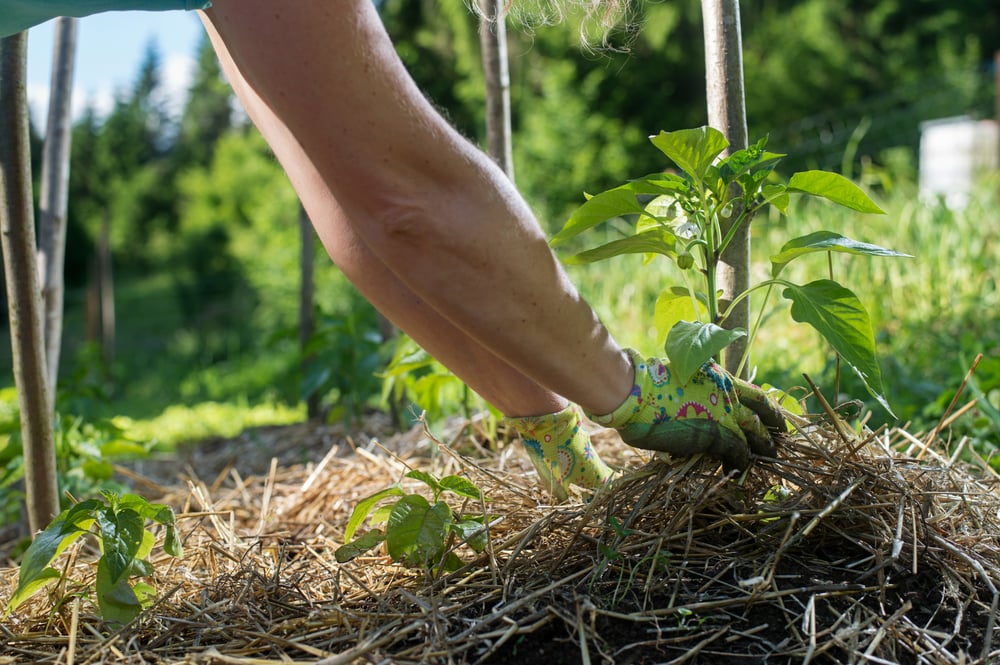
Sadly, a report conducted by the United Nations Food and Agriculture Organization found that plastic mulch, among other products, accounts for the second largest portion of annual global use in the agriculture industry.
The primary types are black, white, and clear plastic sheet mulches. Farmers cut small holes into the mulch for the plant to grow through. These polyethylene mulches release microplastics into the soil, which is harmful to the environment and the growing plants.
So, instead of laying toxic plastic mulch on top of natural soil, consider making and using your own leaf mulch and compost. Also, check out Soil Preparation for Gardening for tips on how to evaluate your soil, amend if necessary, and plan a garden layout.
If you’re concerned about weed control, flat cardboard can be used as an herbicide and plastic mulch alternative. Be sure to use cardboard that hasn’t been sprayed with chemicals, as many companies do this to prevent pests during shipping. Also, remove all stickers and tape before laying the cardboard flat in the garden.
#4: Make Planet-Friendly Plant Labels
Labeling plants, especially seedlings, is critical to knowing what you have growing. Instead of using plastic plant labels, we have a few waste-free suggestions to try this season:
- With a sharpie, write plant names on popsicle sticks.
- Paint smooth river rocks and label them with plant and veggie names.
- Write the plant name on a medium to large-sized wooden bead with a sharpie. String the wooden bead, along with other decorative beads, onto a long and sturdy push pin.
- Write the plant name on a wine cork. Push a wooden skewer stick into the cork to make a plant label.
- Gather a few sticks from the yard, making sure they are sturdy and thick. Using a potato peeler, peel a few layers of bark off the top of the stick. When you have a nice smooth layer of exposed wood, write the plant name with a sharpie.
Note: If you use plastic plant labels, that’s totally fine! The goal, then, is to save and reuse them each year.
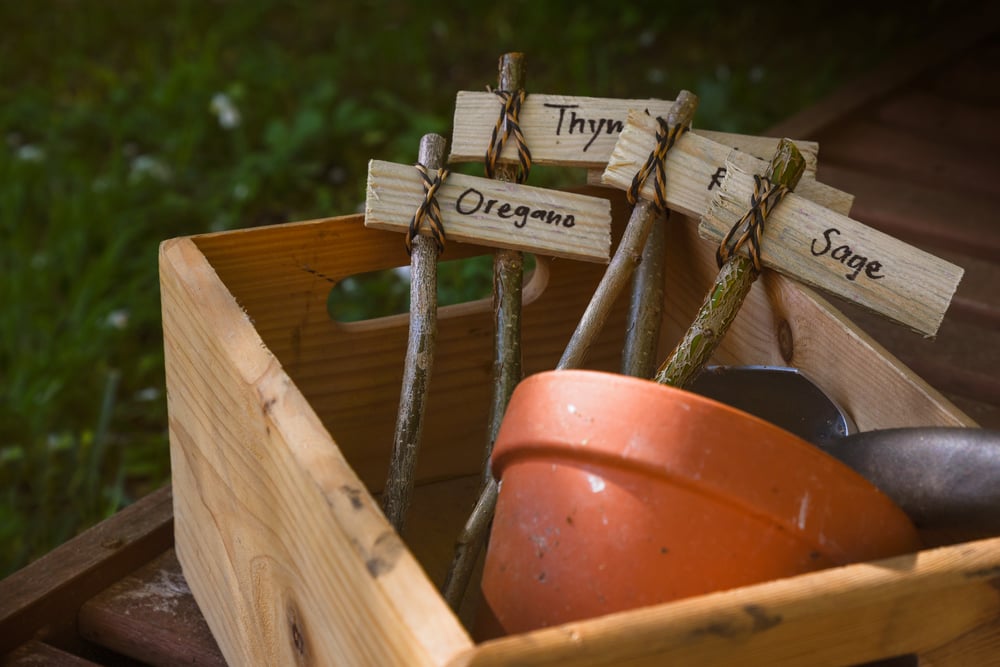
#5: Purchase Tools and Equipment Secondhand
Sourcing high-quality and sturdy homestead tools and equipment can be challenging for rural farmers. Much of what you use on the homestead can be traded or bought secondhand, giving new life to used tools and equipment.
Build connections with your local homestead and farming community, and you’ll be surprised what other farms are looking to sell, give away, or toss.
A few ways to connect with others and find secondhand farm treasures:
- If you’re on Facebook, do a quick search for Buy Nothing or Freebie groups. You’ll be amazed at what people give away for free.
- Another Facebook group to search for is a homestead group. For example, try searching [Your City/Town] Homesteaders. It’s a great place for free advice, to source secondhand tools and equipment, and to talk all things homesteading.
- Shop at local thrift and consignment stores.
Be sure to check out our article, When to Repair, Replace, or Recycle Your Farm Garden Tools for helpful tips on how to increase your tools' longevity.
#6: Rethink Your Product Packaging
Selling directly to consumers offers you more control over how your farm products are packaged. If you are passionate about reducing plastic use on the homestead, your packaging is a great place to start. It also sends a message to your customers that you’re practicing zero-waste, sustainable farming.
There are several alternatives to plastic packaging, including:
Egg Cartons
Instead of using plastic or styrofoam, choose paper egg cartons. These biodegradable alternatives are safer and better for the planet. Ask friends and family to save their paper egg cartons from the grocery store and give them to you for repurposing.
Paper Bags
Single-use plastic bags are a major threat to our planet. Made from low-density polyethylene (LDPE), an endocrine disruptor, they are highly toxic and are associated with negative health effects, including birth defects and cancer.
Paper bags are an excellent alternative to the use of plastic bags. Package vegetables, fruits and other farm-grown produce.
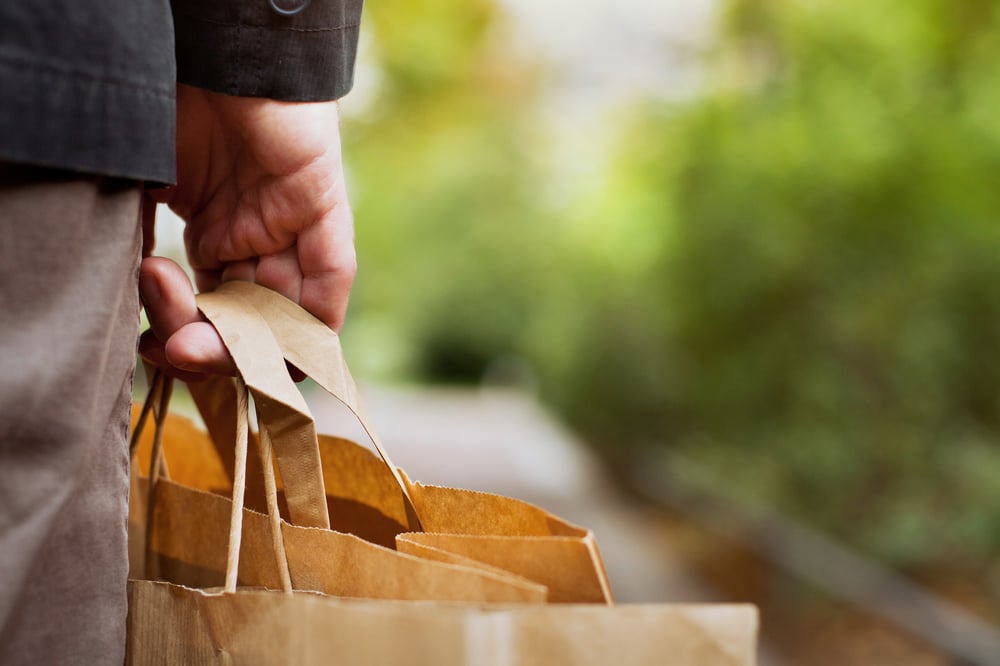
Butcher Paper
For meats, swap plastic wraps and bags for butcher paper. Keep frozen until the customer pays and picks up.
Another plastic- and money-saving tip: Use stamps instead of stickers on your packaging.
Have a BYOB Policy
Encourage customers to bring-your-own-bags (BYOB) for product pick-up.
The downside to a BYOB Policy is the chance of customers forgetting their bags. To avoid this, keep a few paper bags, cardboard boxes and butcher paper on hand, just in case.
Or, set up a sustainable packaging swap:
- Choose your packaging — Mason jars for homemade soups are a great example
- Charge your customer a $1-$3 deposit for the jar
- Each time they purchase soup, the customer brings back their washed mason jar and swaps it out for another mason jar filled with soup
- If they forget their jar, another mason jar deposit is charged
Pledge to Reduce Plastic Waste on the Homestead
Reducing plastic waste doesn’t happen overnight. It will take some time and dedication to navigate all of the alternatives. With any new practice, take it one step at a time. You don’t have to reduce all plastic from the farm, effective immediately.
Choose one item or one practice this year and get really good at it.
It could be updating product packaging to a more biodegradable option. Or, try your hand at making soil blocks and using them for this year’s garden. Whatever you decide on, make an effort, create a habit and then move on to your next plastic-free priority.
You can do it! Every step you take toward a zero-waste homestead is a win this Earth Day 2024.
For more inspiration to reduce plastic, check out Creating A Plastic-Free Country Kitchen: 9 Lessons From Yester-Year.


